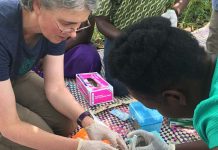According to a statement by the Institute based in North Carolina in the US, several soil health indicators and programmes were in use, but despite its importance, a widely applicable and universally accepted approach for measuring soil health had not been established.
To address this, the institute, along with the Soil Health Partnership (SHP) and the Nature Conservancy (TNC), had grants available totalling US$18,8 million (R237 million) to advance soil health science and implement soil health management practices.
The main goal was to assess the ability of soil health indicators to detect differences in properties of soils that had been managed in different ways for at least 10 years.
Numerous challenges existed, such as the adaptability of different methods and interpretations for different soils, agricultural production systems, and environments; unclear links between measurements, soil processes, and outcomes; ease and cost of measurement techniques; differences in measurement protocols among analytical laboratories; and others, the statement said.
The institute had defined two tiers of indicators for soil health and convened a panel of experts from the US Department of Agriculture, several universities and the private sector to develop a consensus on how each indicator should be measured.
It was seeking individuals and organisations engaged in long-term agricultural field experiments in the US, Canada and Mexico to participate in the project to test the accuracy of the indicators.
A site had to have a minimum of 10 continuous years of land use treatments in a statistically valid experimental design. Treatments included those that could alter soil properties, such as evaluations associated with tillage type, crop rotation, nutrient management, irrigation, grazing management, cover crops, organic amendments and production systems, according to the statement.
Sites selected for the research would receive a payment of US$2 500 (R31 530).
By the project’s conclusion in 2020, the institute expected to have the data required for recommending scientifically sound indicators to help farmers, scientists and agri policy makers answer the fundamental questions on the health of the soils, the statement said.





